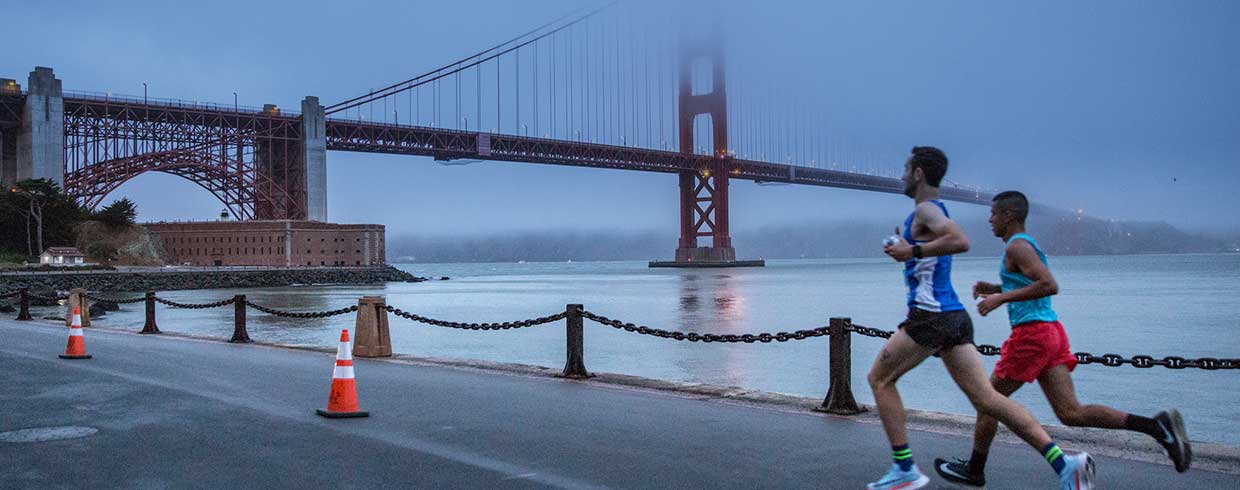Eating Before and During a Run (Race)
By Ben Connelly
It is never too late to start practicing your prerace routine. One of the most important parts of that routine is eating.
Likewise, it is never too late to start practicing eating during long runs. What and how you eat during your race can make or break it.
Today, I plan to break down both of these topics and give you some simple takeaways you can start applying right away.
Eating Before a Run/Race:
Rule #1: Never try something on race day that you have not tried before
Your main goal when gearing up before your long runs is practicing the plan you will execute on race day. This is especially true for eating.
Before a long run, you will want to eat light – enough to fuel your run, but not enough to cause indigestion. Your needs will vary depending on your metabolism and body size. But for some runners, this might look like half a bagel with peanut butter, or a banana and a gel.
Rule #2: Choose foods you can easily digest – Easy on the stomach. Low in fat and fiber. Preferably a mixture of simple and complex carbs and a little protein. I prefer to err on the side of not enough food than too much.
Assuming you have a morning race, and a morning long run, you will probably have an otherwise empty stomach. I recommend eating within 1 hour of your run/race. 30 minutes might be ideal. Some people recommend a small meal 1 hour before and a light snack immediately before starting. Experiment yourself to find your ideal routine. I do not recommend waking up 3 hours before your race to eat a meal.
Eating While Running/Racing:
Rule #3: Start early – a gel at 23 miles does nothing for you (except psychologically). Start eating at 2 miles or 4 miles. When you feel the need (i.e., you hit the wall), it is too late.
Experiment with various types of racing food. I like Clif Bloks. Many people prefer gels or gus. A friend of mine actually ran his whole marathon on Starburst. Trial and error will help you find food you can digest (and chew/carry/open/swallow) while running. This is not the time for a high-fiber cereal bar or carrots.
Quick Tip: You will find it easiest to chew and swallow while running downhill. Or rather, going uphill, you will need to breath more heavily and having something in your mouth can impede breathing.
Some people recommend trying to consume all of the calories you will burn during the race while running (including calories eaten immediately beforehand). Even with a slow metabolism and high-calorie choices, that is a lot of food. In my opinion, that will only slow you down or cause gastrointestinal disorder. The human body will not collapse from a 200-calorie deficit. There is no need to try to avoid even a 1500-calorie (or more) deficit.
I recommend 800-1200 calories beforehand (again, depending on size and metabolism) and 300-500 calories during the race. On a long run, you could go much lower. With practice, you can run for a couple hours on a complete fast. I never eat more than 200 during a 20-mile long run.
Summing it Up:
Rule #4: Eat during the race and before the race. Not too much. Not too little.
Key Takeaway: Use long runs to practice what, how, and when you eat. Develop a routine based on your personal needs, body type, and preferences. Then execute that routine on race day.
Final Tip: Do not obsess over this. As I said, a friend of mine ate Starburst. You do not have to execute a flawless plan flawlessly. Most mistakes can be overcome with cleverness and a good attitude.



Sonny Saw
August 29, 2021 (3:37 pm)
Where can I park my car?
Marie Grace
August 30, 2021 (12:18 pm)
Please visit our travel and lodging page (linked below) for discounted Spot Hero reservations.
https://www.thesfmarathon.com/race-weekend/hotel-and-travel-info/